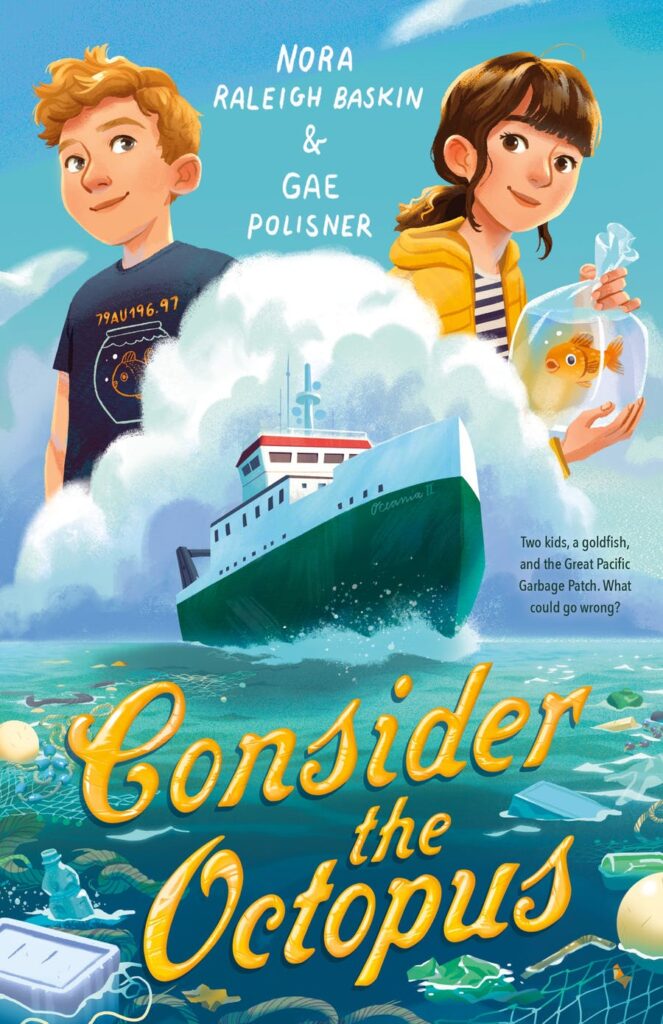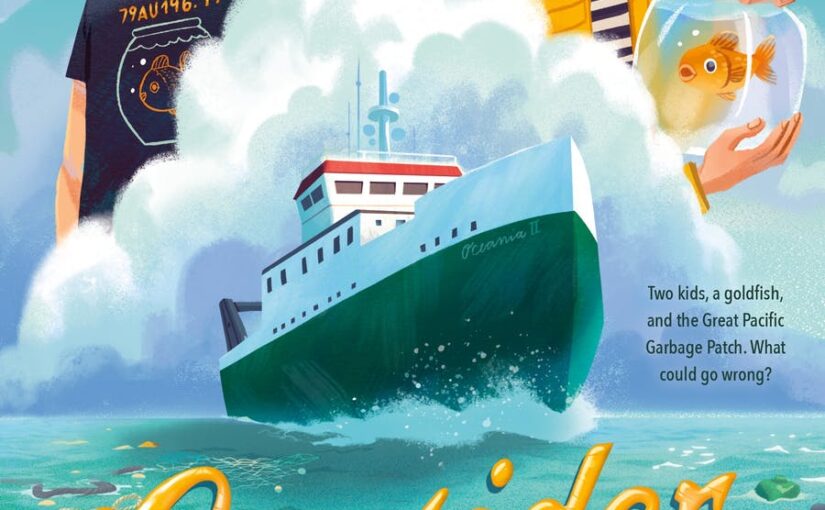Consider the Octopus was such a wonderful surprise to read. Having finished the book the clues to what adds up to make it fun are shown on the cover. A casual glance at Consider the Octopus has a teen girl and boy on the cover, while a mid-size ship is cruising through an area of the ocean that’s covered with plastic. The book has elements of all of those things, but its result is far more entertaining and fun, than you’re prepared for.

Potential readers might be thinking that it’s a teen romance or an eco message mglit book. People think either of those are right and wrong, but it’s the added funny elements that make Consider the Octopus play in the best of all ways.
Sidney Miller is a tween girl who really doesn’t want to spend the upcoming summer where her parents want her to. JB is a boy the same age, whose mom is a scientist working onboard a scientific vessel. The ship is struggling to get the funds it needs so that it can keep raising awareness about plastic pollution, specifically the Great Pacific Garbage Patch. As a matter of fact, if JB can’t generate enough press, which would, in turn, lead to more funding, this is the ship’s final trip.
JB has the same issue as Sidney, in that he doesn’t really want to be where he is that summer. However, his mom needs his help on the ship. His latest task is to invite scientists on a scientific voyage to witness the Great Pacific Garage Patch, and to see what could be done about it. Conveniently for both of them, one of the world’s top scientists is also named Sidney Miller. Sure enough, JB doesn’t do enough research and accidentally invites the cute girl who is his age.
In the time frame of the book all of these shenanigans happen very quickly. This allows Consider the Octopus the chance to excel where its best parts are, the humor and the fun. What follows is almost slapstick at sea with JB hiding Sidney, all the while trying to figure out how he can minimize the trouble that he’s in when he eventually gets caught. The other students on the ship get in on the act, but they’re also passionate about spreading awareness and finding a solution to this huge floating plastic island they’ve heard about.
Consider the Octopus manages to be an eco book, without being preachy, while still being educational and making young readers curious about its content. It does this by setting up the ship as a non-romantic Mystery Date as to how long the crew and students can keep up the ruse. This is a STEM book with more humor than education, as well as enough heart to make readers care about its characters. That’s quite a tall feat from a potentially silly book that could’ve easily gone down the wrong path. Instead, Consider the Octopus is a fun book that breezes along for ages eight and up as effortless as sailing with the wind at your back.
Consider the Octopus is by Nora Raleigh Baskin and Gae Polisner and available on Henry Holt & Co., an imprint of Macmillan Publishers.
There are affiliate links in this post.





 Facebook
Facebook Twitter
Twitter Flickr
Flickr GooglePlus
GooglePlus Youtube
Youtube